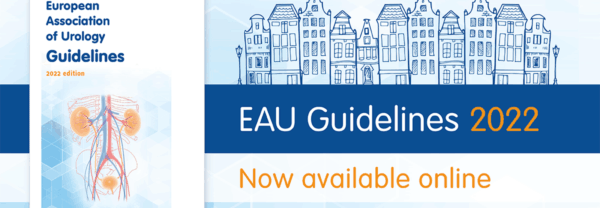EMUC19: ARAMIS trial likely to change Guidelines recommendations
The third day of the EMUC meeting (and the second day of the main scientific programme) opened with a two-hour session on new trials.

Like all sessions at EMUC19, it was chaired by a multidisciplinary group, in this case Dr. Carl Salembier (radiation oncologist), Prof. Aristotelis Bamias (medical oncologist) and Ass. Prof. Maurer (urologist).
The audience was presented with the most up-to-date statistics and preliminary conclusions from the SPCG4 study, the ARAMIS trial, KEYNOTE 057, with further lectures concerning first-line treatment options for metastatic RCC and the duration of ADT in high-risk PCa. Each presenter was followed by a discussant from a complementary specialty and many further talking points coming from the audience.
ARAMIS
It was Prof. Karim Fizazi’s talk on the ARAMIS trial and the potential for the use of darolutamide for non-metastatic, castration-resistant prostate cancer (m0 CRPC) that led to a lot of discussion. M0 CRPC is considered to be a quite rare situation, so treatment has so far been an unmet need. Primary endpoints were improved overall survival and time to pain progression.
Darolutamide’s structure might be the explanation for its low blood-brain barrier penetration, leading to fewer side effects and better tolerability when compared to enzalutamide and apalutamide (PROSPER and SPARTAN trials respectively).
Fizazi concluded based on the latest results that all three agents showed clear and meaningful improvement of metastasis-free survival, with Darolutamide, in particular, showing a remarkable safety profile. The preliminary results clearly suggested improvement in pain progression and overall survival.
Not only his ‘discussant’ Prof. Maria De Santis added new insights, but the audience too had questions about the potential of darolutamide vs. enzalutamide and apalutamide. While the results of darolutamide and the ARAMIS trial are very good, particulary, the tolerability, the price point may yet be an important factor when choosing between the drugs, Fizazi pointed out.
De Santis pointed out changes in the 2019 EAU Guidelines that gave a strong recommendation for APA or ENZA for patients with m0 CRPC, and expected the 2020 Guidelines to do the same for Darolutamide, based on these new results. This was clearly the “Guideline-changing potential” that Dr. Maurer expected from the session beforehand.
Challenges when comparing trials
Prof. Pär Stattin on the SPCG4 Trial. The trials compared radical prostatectomy vs watchful waiting in early prostate cancer and recruited 695 men between 1989-1999. It spawned five major publications in the New England Journal of Medicine in 2002, 2005, 2011, 2014 and 2018.
At EMUC19, Stattin explored whether the absolute risks of death from the trial were applicable to current patients undergoing radical prostatectomy. Unfortunately, the trial did not collect data on prostate volume (and therefore density), the extent of cancer on biopsy or the comorbidities, making this a challenge.
Further challenges for those wishing to draw lessons out of a twenty-year-old trial are what Stattin referred to as “Gleason grade inflation” that required compensation. Broadly concluded, the absolute risk of PCa death in SPCG-4 is not applicable to men undergoing radical prostatectomy in 2019. Furthermore, comprehensive data on changes in detection, cancer characteristics and work-up have to be considered in order to interpret data in old trials.


